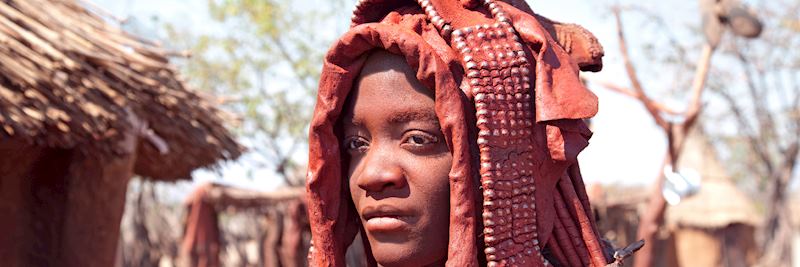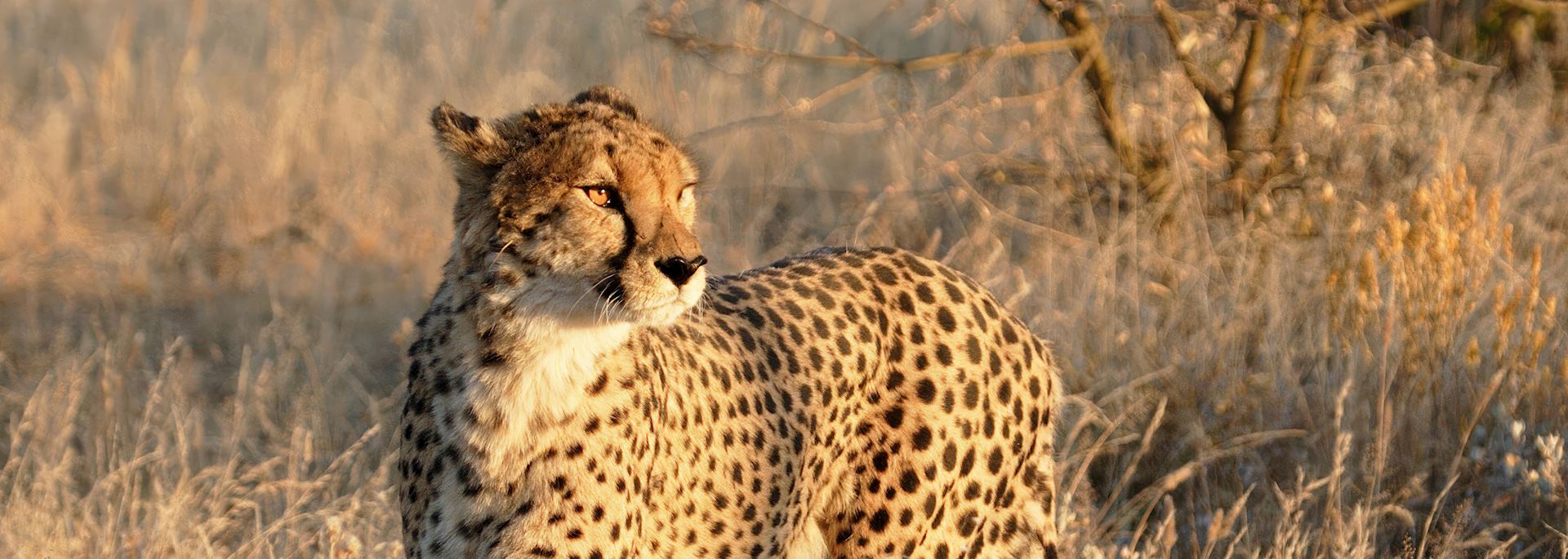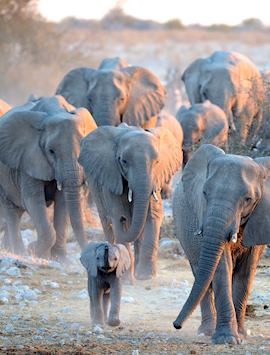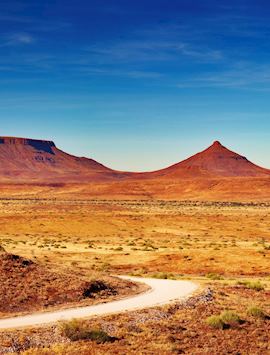By Namibia specialist Steve
Incredible wildlife viewing opportunities both inland and on the coast, the world's highest sand dunes and German colonial cities, Namibia is delightfully different to other African countries.
With well-maintained roads it’s also an ideal place to self-drive, making Namibia a lot more affordable than many safari destinations where private transfers and guides are required.
Things to do in Namibia: my selected highlights
Spot wildlife in Etosha National Park

One of Africa’s largest game parks, Etosha’s shimmering salt pans and open grasslands provide the habitat for wildlife such as lion, leopard, elephant, zebra, wildebeest and impala. There are more cheetah here than anywhere else in Africa, although they can still be difficult to spot. You will also see a wide variety of birdlife, including the yellow billed hornbill and the large, flightless kori bustard.
There are plenty of waterholes within the park that attract the game, and I'd recommend exploring a couple of different areas over the course of a few days. You can do this by yourself or with a guide, but for me one of the highlights of Etosha is being able to self-drive across the park. You can stop as and when you like, to watch the wildlife, and several times I had to come to a standstill as a zebra or giraffe crossed the road.
As you get closer to sunset a stillness settles over Etosha. One evening I watched an elephant have a sand bath, the grains catching the light in the still air through the haze of the setting sun.
Etosha is around a five-hour drive from Windhoek.
Go in search of the desert-adapted elephant in Damaraland

Namibia is known for its desert-adapted elephant, and one of the best places to see them is Damaraland, which is the region between Etosha National Park and the Skeleton Coast. This arid, rocky desert is also a refuge of the black rhino, as well as gemsbok, kudu, springbok and Hartmann's zebra.
One of the best ways to spot the wildlife is on a nature drive with a guide. I always enjoy seeing elephant in the wild and observing their behaviour — you usually hear them before you see them, with the rustling of a bush or a snap of a branch.
In the south of Damaraland, the area of Twyfelfontein has a large collection of ancient rock art depicting animals including elephant, giraffe and, more surprisingly, penguins, and geometric patterns. You can also see unusual rock formations, including the aptly named Organ Pipes, and Burnt Mountain, so called because of its red and brown hues.
Sample fresh seafood in Swakopmund

Namibia’s second largest city but still very small, Swakopmund is just a three and a half hour drive from Windhoek.
Wide streets lined with palm trees criss-cross between the roaring ocean and the Namib Desert. Being right next to the Atlantic, there is an abundance of excellent seafood restaurants serving up fresh crayfish and Skeleton Coast mussels.
My favourite place to dine is the Tug. This delightful restaurant started off as a small shack and has grown into a Swakopmund institution. Last time I was there I tried grilled swordfish for the first time — it was delicious.
The city serves as a great base for a number of activities, and it’s easy to fill up two or three days here. You can take an early morning drive out to Pelican Point to kayak among a colony of over 300 Cape fur seals. These playful creatures are as interested in you as you are them, often coming right up to the kayaks and nibbling the oars. During my time on the water I also spotted Heaviside's and bottlenose dolphins.
You can also explore the sand dunes outside Swakopmund on a living desert tour. With an emphasis on the smaller creatures of Namibia, you’ll search for geckos, beetles and spiders with your guide and see how many species make this inhospitable area home. The dunes also provide the ideal environment for quad biking and sandboarding.
Climb the dunes at Sossusvlei

To the south of Swakopmund, striking, fiery hues light up the landscape in Sossusvlei, a World Heritage Site that’s home to the largest sand dunes in the world. These sandbanks are monumental, and one of the best ways to appreciate their size is to climb them.
From the top you’ll see an endless stretch of dunes that rise and fall in the distance, and a valley floor dotted sporadically with the green of nara bushes and acacia trees.
Sossusvlei is around a six-hour drive south from Swakopmund and it's worth spending at least two nights here to give yourself time to view the landscape at sunrise and sunset, when the changing light casts a remarkable glow over the dune fields.
Namibia’s lesser-known highlights
Walk in the Erongo Mountains

Formed from an extinct volcano, the Erongo Mountains are a great place to go walking. The surrounding countryside has an interesting geological make up, with aquamarine and topaz having been found in the area. There are also caves and ancient rock art to discover.
This is not to say that you won't see wildlife here. On one visit I spotted a rare aardwolf, an animal my local guide hadn’t seen for two years. The area is also alive with numerous species of birdlife, including the rosy-faced lovebird.
Visit the AfriCat Foundation in Okonjima

Halfway between Windhoek and Etosha in the Omboroko Mountains, is the private Okonjima Nature Reserve. The family-run reserve is home to a huge variety of wildlife, but is most well-known for its support of The AfriCat Foundation. The foundation aims to rescue, relocate and rehabilitate the country’s carnivores, in particular leopard, while conducting important research into the species that helps to prevent them from disrupting the livelihoods of local farmers. The foundation also works with the farmers themselves to educate them about the conservation of these big cats.
The leopard are able to roam a large area as part of their rehabilitation, and you’re almost guaranteed to see these normally elusive creatures, thanks to the use of radio tracking collars. You can also head out on game drives to track them and many other animals, including kudu, brown hyena and large numbers of endemic birds, all while learning more about the foundation’s work.
Get off the beaten track on the Skeleton Coast

On the west coast of Namibia, the wild and remote Skeleton Coast represents a completely different side of the country. A region of shipwrecks and nomadic Himba tribes, the only way to reach this part of Namibia is by plane.
You can spend four days here exploring the unique ecosystems, sliding down sand dunes and dining under the stars.
Start planning your trip to Namibia
Start thinking about your experience. These itineraries are simply suggestions for how you could enjoy some of the same experiences as our specialists. They're just for inspiration, because your trip will be created around your particular tastes.
View All Tours in Namibia




